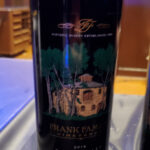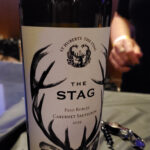2019 Wine Vintage Report
🏆 Was 2019 a Good Wine Vintage Year?
2019 was a year of strong quality in many regions, despite smaller harvests and challenging weather.
In the northern hemisphere, Europe saw high-quality wines despite challenges. France, Italy, and Spain all faced extremes in weather, and yet all three countries pulled through with great wine. Germany had a great year too. In the US, it was also an excellent year; California faced fires, but still produced good wine.
In the southern hemisphere, South America had a good year, if not great, with Chile faring a little better than Argentina. Australia struggled with drought and fires while New Zealand had a banner year. South Africa had weather issues too, but should produce good wine.
It’s a great year for Old World wine, with the three main producers in Europe all overcoming obstacles to put out great vintages. The New World still had its victories in the US and New Zealand.
Let’s dig in to 2019.
📉 Global Wine Trends in 2019
🌍🍇 Global wine production in 2019 was 263 million hectoliters, down 10.5% from 2018 (though it should be noted that 2018’s harvest was historically large).
🌎🍷 Global wine consumption in 2019 was 236 million hectoliters, down 1.3% since 2018.
🌐 The 2019 Vintage by Country
📍 The Big Four
France, Italy, Spain, and the US consistently dominate the modern global wine scene.
 FRANCE produced 42.2 million hectoliters of wine in 2019. Despite spring frosts, the year thrived with a hot summer—the second hottest year on record globally—leading to likely high-quality wines.
FRANCE produced 42.2 million hectoliters of wine in 2019. Despite spring frosts, the year thrived with a hot summer—the second hottest year on record globally—leading to likely high-quality wines.
- BORDEAUX had a banner year, producing exceptional wines.
- SAUTERNES also enjoyed a banner year, standing out for its quality.
- BURGUNDY produced high-quality grapes, though with slightly lower yields.
- BEAUJOLAIS had a similar outcome, with slightly lower yields but excellent quality.
- CHAMPAGNE delivered high-quality sparkling wines, despite slightly lower yields.
- ALSACE is in the same boat, with slightly reduced yields but strong quality.
- THE LOIRE VALLEY produced high-quality wines, though yields were also slightly lower than usual.
- THE RHÔNE VALLEY also saw slightly reduced yields but maintained high grape quality.
 ITALY had floods, storms, and extreme heat in 2019, leading to a smaller harvest than last year–47.5 million hectoliters. This year was Italy’s fourth-warmest since 1800. The growing season was long and had a slow start, and although the abundance of grapes wasn’t huge, the quality was above average. International demand for Italian wine had also been growing quite a bit. I might especially recommend something from the Piedmont region from 2019, but most Italian grapes this year will likely be good if not great.
ITALY had floods, storms, and extreme heat in 2019, leading to a smaller harvest than last year–47.5 million hectoliters. This year was Italy’s fourth-warmest since 1800. The growing season was long and had a slow start, and although the abundance of grapes wasn’t huge, the quality was above average. International demand for Italian wine had also been growing quite a bit. I might especially recommend something from the Piedmont region from 2019, but most Italian grapes this year will likely be good if not great.
 SPAIN produced 33.7 million hectoliters of wine in 2019. Despite reduced yields due to droughts, spring frosts, and hail, the vintage quality was excellent. A hot and dry summer stressed vines and concentrated fruit flavors to create very rich reds. While some regions like Rías Baixas had issues with mildew, most of Spain had a successful harvest. 2019 is a strong vintage for Spain.
SPAIN produced 33.7 million hectoliters of wine in 2019. Despite reduced yields due to droughts, spring frosts, and hail, the vintage quality was excellent. A hot and dry summer stressed vines and concentrated fruit flavors to create very rich reds. While some regions like Rías Baixas had issues with mildew, most of Spain had a successful harvest. 2019 is a strong vintage for Spain.
 THE UNITED STATES produced 25.6 million hectoliters of wine in 2019.
THE UNITED STATES produced 25.6 million hectoliters of wine in 2019.
 CALIFORNIA had a good year, with a long growing season that featured minimal heat spikes. Heavy spring rains posed challenges with mildew and coulure, but the warm, sunny summer and cool morning fogs preserved acidity and aromatics. A long, easy harvest allowed for great ripening. Sonoma had some late-season wildfires that caused localized damage. Napa had early-season rainfall that helped keep the vines fresh through summer, and produced deep Pinot Noirs and
CALIFORNIA had a good year, with a long growing season that featured minimal heat spikes. Heavy spring rains posed challenges with mildew and coulure, but the warm, sunny summer and cool morning fogs preserved acidity and aromatics. A long, easy harvest allowed for great ripening. Sonoma had some late-season wildfires that caused localized damage. Napa had early-season rainfall that helped keep the vines fresh through summer, and produced deep Pinot Noirs and WASHINGTON STATE had a long winter that left snow in the vineyards into March, which delayed early season work and increased soil moisture. Summer was cooler than it had been in recent years, culminating in a small late-September frost and then bigger frosts in October. Even though plenty of vineyards (especially smaller operations) were harvested by then, the late start and frosty end helped lessen the state’s yield this year (especially mass producers). However, it should be an excellent year for quality, with great acidity levels.
WASHINGTON STATE had a long winter that left snow in the vineyards into March, which delayed early season work and increased soil moisture. Summer was cooler than it had been in recent years, culminating in a small late-September frost and then bigger frosts in October. Even though plenty of vineyards (especially smaller operations) were harvested by then, the late start and frosty end helped lessen the state’s yield this year (especially mass producers). However, it should be an excellent year for quality, with great acidity levels. OREGON had a cooler growing season compared to recent years, a return to “normal” summer temperatures (although normal may be getting warmer with climate change). Heavy rains and high humidity during June and July increased disease pressure, and cold rains near harvest forced earlier picking. Still, wine quality should be excellent, with classic Oregon Pinots featuring floral aromas and full structures.
OREGON had a cooler growing season compared to recent years, a return to “normal” summer temperatures (although normal may be getting warmer with climate change). Heavy rains and high humidity during June and July increased disease pressure, and cold rains near harvest forced earlier picking. Still, wine quality should be excellent, with classic Oregon Pinots featuring floral aromas and full structures. NEW YORK STATE had a cool start to the growing season, but had a warm and dry finish. The Finger Lakes region had a good year for fresh, mineral-forward Rieslings and restrained reds suitable for aging.
NEW YORK STATE had a cool start to the growing season, but had a warm and dry finish. The Finger Lakes region had a good year for fresh, mineral-forward Rieslings and restrained reds suitable for aging.
📍 Europe
The heart of the wine world, Europe boasts centuries of expertise and massive variety.
 PORTUGAL produced 6.5 million hectoliters of wine in 2019. A dry winter and spring led into a cooler-than-average summer, allowing for slow and steady ripening. A little rain in the late fall rehydrated the vines, leading to balanced fruit development. The wines this year have good freshness, elegance, and structure, though less concentrated flavors than 2017 and 2018. Whites from this vintage are noted for great aromatics, especially those made from native grape varieties. The 2019 Port vintage is notable for its long and temperate harvest–although not a generally declared vintage, many producers opted for single-quinta Ports. They should age well and offer a more understated, nuanced expression compared to the richer vintages of recent years.
PORTUGAL produced 6.5 million hectoliters of wine in 2019. A dry winter and spring led into a cooler-than-average summer, allowing for slow and steady ripening. A little rain in the late fall rehydrated the vines, leading to balanced fruit development. The wines this year have good freshness, elegance, and structure, though less concentrated flavors than 2017 and 2018. Whites from this vintage are noted for great aromatics, especially those made from native grape varieties. The 2019 Port vintage is notable for its long and temperate harvest–although not a generally declared vintage, many producers opted for single-quinta Ports. They should age well and offer a more understated, nuanced expression compared to the richer vintages of recent years.
 GERMANY produced 8.2 million hectoliters of wine in 2019. It was a standout year, with lower yields but remarkable quality. A hot, dry summer saw losses due to sunburn and drought, with hailstorms making matters worse. However, August rains helped revitalize the vines, and September had warm days and cool nights that perfectly balanced ripening and acidity. The harvest progressed smoothly, with early-ripening varieties picked in time and Riesling left for extended hang time. A little bit of botrytis in October allowed for excellent dessert wines, too. This was a great year across all styles for Germany.
GERMANY produced 8.2 million hectoliters of wine in 2019. It was a standout year, with lower yields but remarkable quality. A hot, dry summer saw losses due to sunburn and drought, with hailstorms making matters worse. However, August rains helped revitalize the vines, and September had warm days and cool nights that perfectly balanced ripening and acidity. The harvest progressed smoothly, with early-ripening varieties picked in time and Riesling left for extended hang time. A little bit of botrytis in October allowed for excellent dessert wines, too. This was a great year across all styles for Germany.
 AUSTRIA produced 2.5 million hectoliters of wine in 2019. It was a strong year with excellent quality across most varieties. A warm winter led into a cool, wet May that delayed flowering but replenished the soil, which came in handy during the following hot, dry summer. The heat stressed vines, which led to more concentration in the grapes. September and October brought milder weather and cooler nights, allowing grapes to ripen fully. Whites, especially Grüner Veltliner and Riesling, featured vibrant fruity notes and typicity. Reds were rich and concentrated, showing significant depth and complexity, especially Blaufränkisch and Zweigelt. Sweet wines and Eisweins were limited.
AUSTRIA produced 2.5 million hectoliters of wine in 2019. It was a strong year with excellent quality across most varieties. A warm winter led into a cool, wet May that delayed flowering but replenished the soil, which came in handy during the following hot, dry summer. The heat stressed vines, which led to more concentration in the grapes. September and October brought milder weather and cooler nights, allowing grapes to ripen fully. Whites, especially Grüner Veltliner and Riesling, featured vibrant fruity notes and typicity. Reds were rich and concentrated, showing significant depth and complexity, especially Blaufränkisch and Zweigelt. Sweet wines and Eisweins were limited.
 Switzerland produced 1.0 million hectoliter of wine in 2019.
Switzerland produced 1.0 million hectoliter of wine in 2019.
 Hungary produced 2.4 million hectoliters of wine in 2019.
Hungary produced 2.4 million hectoliters of wine in 2019.
 Greece produced 2.4 million hectoliters of wine in 2019.
Greece produced 2.4 million hectoliters of wine in 2019.
 Czechia produced 0.5 million hectoliters of wine in 2019.
Czechia produced 0.5 million hectoliters of wine in 2019.
 Slovakia produced 0.3 million hectoliters of wine in 2019.
Slovakia produced 0.3 million hectoliters of wine in 2019.
 Slovenia produced 0.8 million hectoliters of wine in 2019.
Slovenia produced 0.8 million hectoliters of wine in 2019.
 Croatia produced 0.5 million hectoliters of wine in 2019.
Croatia produced 0.5 million hectoliters of wine in 2019.
 Georgia produced 2.1 million hectoliters of wine in 2019.
Georgia produced 2.1 million hectoliters of wine in 2019.
 Romania produced 3.8 million hectoliters of wine in 2019.
Romania produced 3.8 million hectoliters of wine in 2019.
 Moldova produced 1.5 million hectoliters of wine in 2019.
Moldova produced 1.5 million hectoliters of wine in 2019.
 Russia produced 4.6 million hectoliters of wine in 2019.
Russia produced 4.6 million hectoliters of wine in 2019.
 Bulgaria produced 0.9 million hectoliters of wine in 2019.
Bulgaria produced 0.9 million hectoliters of wine in 2019.
 Luxembourg produced 0.1 million hectoliters of wine in 2019.
Luxembourg produced 0.1 million hectoliters of wine in 2019.
 Cyprus produced 0.1 million hectoliters of wine in 2019.
Cyprus produced 0.1 million hectoliters of wine in 2019.
 THE UNITED KINGDOM produced about 78,750 hectoliters of wine in 2019. There were highs and lows this year–a warm winter led to early budburst but also spring frost, which fortunately only caused minor damage. A late June heatwave helped with flowering, but also came with fungal pressure. A rainy fall led to a wet harvest season. Yields were down compared to the record-breaking 2018 vintage, but still very high for the country. It should nevertheless be a solid year for sparkling wines and a decent year for stills.
THE UNITED KINGDOM produced about 78,750 hectoliters of wine in 2019. There were highs and lows this year–a warm winter led to early budburst but also spring frost, which fortunately only caused minor damage. A late June heatwave helped with flowering, but also came with fungal pressure. A rainy fall led to a wet harvest season. Yields were down compared to the record-breaking 2018 vintage, but still very high for the country. It should nevertheless be a solid year for sparkling wines and a decent year for stills.
📍 North & South America
The Americas continue to expand their influence, from the rugged Andes to Canada’s icy valleys.
 ARGENTINA produced 13 million hectoliters of wine in 2019. It was a slightly cool year, which led to excellent wines across the country. A cold winter and cool spring helped preserve freshness, while heat spikes in January quickened the ripening process. The harvest season was cool and calm. Mendoza excelled, with the Uco Valley producing especially fresh wines, and Luján de Cuyo coming through with great reds. Patagonia saw a balanced year as well, and the north, including Salta, produced aromatic whites like Torrontés. It was a good year for fresh, crisp wines.
ARGENTINA produced 13 million hectoliters of wine in 2019. It was a slightly cool year, which led to excellent wines across the country. A cold winter and cool spring helped preserve freshness, while heat spikes in January quickened the ripening process. The harvest season was cool and calm. Mendoza excelled, with the Uco Valley producing especially fresh wines, and Luján de Cuyo coming through with great reds. Patagonia saw a balanced year as well, and the north, including Salta, produced aromatic whites like Torrontés. It was a good year for fresh, crisp wines.
 CHILE produced 11.9 million hectoliters of wine in 2019. A cool spring delayed budbreak, but the weather quickly turned hot, with February heat spikes dehydrating some regions. Extreme drought and summer heat pushed ripening forward and resulted in more concentrated berries. Reds like Cabernet Sauvignon and Carmenère were especially vibrant, especially in inland regions like Maule and Curicó. Coastal regions like Casablanca and Limarí benefited from ocean breezes and cooler nights, helping their white wines. Overall, 2019 is a strong year and a good vintage for showcasing regional variety.
CHILE produced 11.9 million hectoliters of wine in 2019. A cool spring delayed budbreak, but the weather quickly turned hot, with February heat spikes dehydrating some regions. Extreme drought and summer heat pushed ripening forward and resulted in more concentrated berries. Reds like Cabernet Sauvignon and Carmenère were especially vibrant, especially in inland regions like Maule and Curicó. Coastal regions like Casablanca and Limarí benefited from ocean breezes and cooler nights, helping their white wines. Overall, 2019 is a strong year and a good vintage for showcasing regional variety.
 Brazil produced 2.2 million hectoliters of wine in 2019.
Brazil produced 2.2 million hectoliters of wine in 2019.
 URUGUAY produced 0.6 million hectoliters of wine in 2019. It was a challenging year thanks to an extra-rainy summer. Wines this year are likely lighter-bodied, fresh, and vibrant, especially in whites like Chardonnay and Albariño. Full-bodied reds lacked the concentration of warmer years, but it was still a decent year for Tannat (the national grape).
URUGUAY produced 0.6 million hectoliters of wine in 2019. It was a challenging year thanks to an extra-rainy summer. Wines this year are likely lighter-bodied, fresh, and vibrant, especially in whites like Chardonnay and Albariño. Full-bodied reds lacked the concentration of warmer years, but it was still a decent year for Tannat (the national grape).
📍 Oceania
Oceania’s unique climates and soils produce globally distinctive wines.
 AUSTRALIA produced 12 million hectoliters of wine in 2019. It was a challenging year, with drought and intense heat causing many regions to lose crops due to water shortages, including Barossa, Clare Valley, and Adelaide Hills. Some areas, like Tasmania, benefited from winter rainfall that they could stretch into the tough summer. Other regions, like New South Wales, Victoria, and South Australia, had to battle wildfires. It was a bad year for Chardonnay, and a better year for reds, with strong, bold, fruit-forward wines being produced this year.
AUSTRALIA produced 12 million hectoliters of wine in 2019. It was a challenging year, with drought and intense heat causing many regions to lose crops due to water shortages, including Barossa, Clare Valley, and Adelaide Hills. Some areas, like Tasmania, benefited from winter rainfall that they could stretch into the tough summer. Other regions, like New South Wales, Victoria, and South Australia, had to battle wildfires. It was a bad year for Chardonnay, and a better year for reds, with strong, bold, fruit-forward wines being produced this year.
 NEW ZEALAND produced 3 million hectoliters of wine in 2019. It was an absolute banner year, widely celebrated as one of the best in the country’s history. A warm, dry growing season with minimal disease pressure allowed grapes to ripen perfectly. Marlborough put out perfectly balanced Sauvignon Blancs and Pinot Noirs. Hawke’s Bay Syrah and Martinborough Pinot Noir were also standouts this year. This is an excellent year for anything from New Zealand.
NEW ZEALAND produced 3 million hectoliters of wine in 2019. It was an absolute banner year, widely celebrated as one of the best in the country’s history. A warm, dry growing season with minimal disease pressure allowed grapes to ripen perfectly. Marlborough put out perfectly balanced Sauvignon Blancs and Pinot Noirs. Hawke’s Bay Syrah and Martinborough Pinot Noir were also standouts this year. This is an excellent year for anything from New Zealand.
📍 Africa & Asia
Emerging markets in Africa and Asia bring fresh perspectives to the industry.
 SOUTH AFRICA produced 9.7 million hectoliters of wine in 2019. It was a challenging year, with lingering drought conditions and erratic weather. A mild winter led to early budbreak, which was followed by a cold snap that disrupted flowering and caused all sorts of issues. Summer had heatwaves and abrupt cool periods, leaving some red varieties struggling to fully ripen, resulting in lower sugar and alcohol levels. Despite the rough year, the grapes that survived showed good concentration and balanced acidity. Chenin Blanc is a standout this year.
SOUTH AFRICA produced 9.7 million hectoliters of wine in 2019. It was a challenging year, with lingering drought conditions and erratic weather. A mild winter led to early budbreak, which was followed by a cold snap that disrupted flowering and caused all sorts of issues. Summer had heatwaves and abrupt cool periods, leaving some red varieties struggling to fully ripen, resulting in lower sugar and alcohol levels. Despite the rough year, the grapes that survived showed good concentration and balanced acidity. Chenin Blanc is a standout this year.
 China produced 7.8 million hectoliters of wine in 2019.
China produced 7.8 million hectoliters of wine in 2019.
Sources: OIV, Drinks Business, Wine-Searcher, LangheVini, Washington Wine, Finger Lakes Wine Alliance, Jancis Robinson (2), K&L Wines, Wine Rabble, Napa Vintners, South America Wine Guide, Austrian Wine, English Wine.
🍷 Wines from 2019 I’ve Tried
See all Vintages (Years) of Wine, or jump straight to: 2012, 2013, 2014, 2015, 2016, 2017, 2018, 2019, 2020, 2021, 2022, 2023, or 2024. See also: No Vintage.





